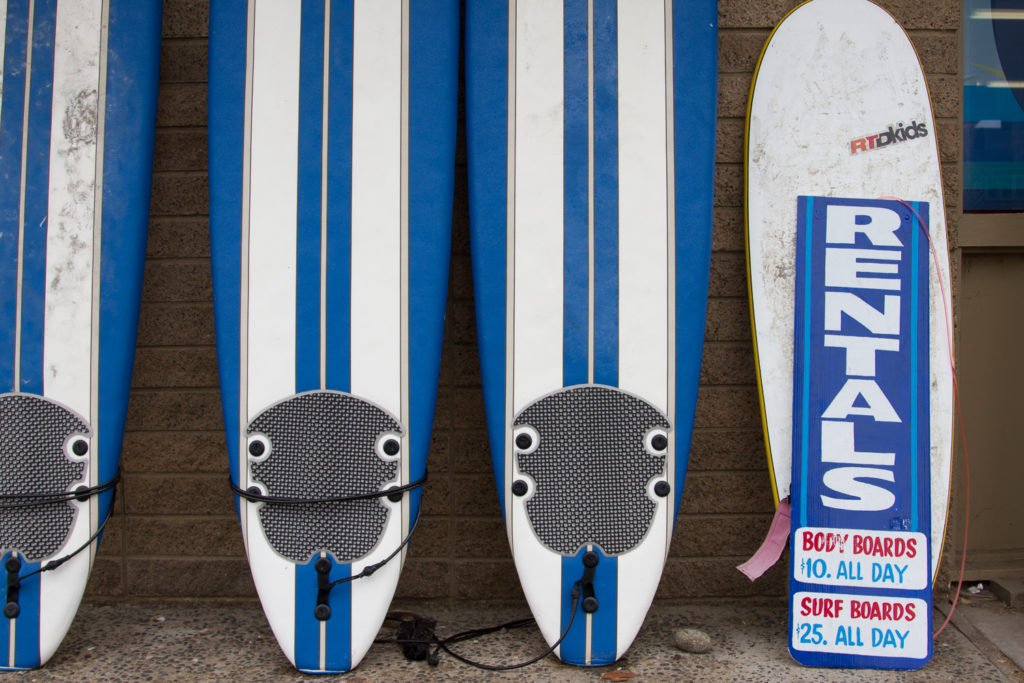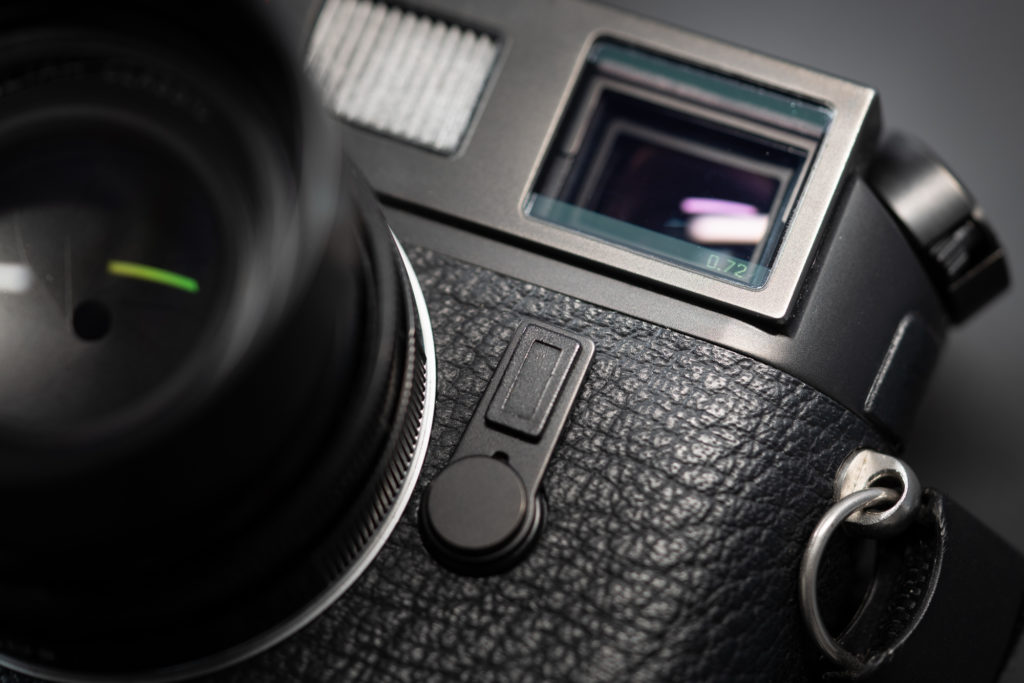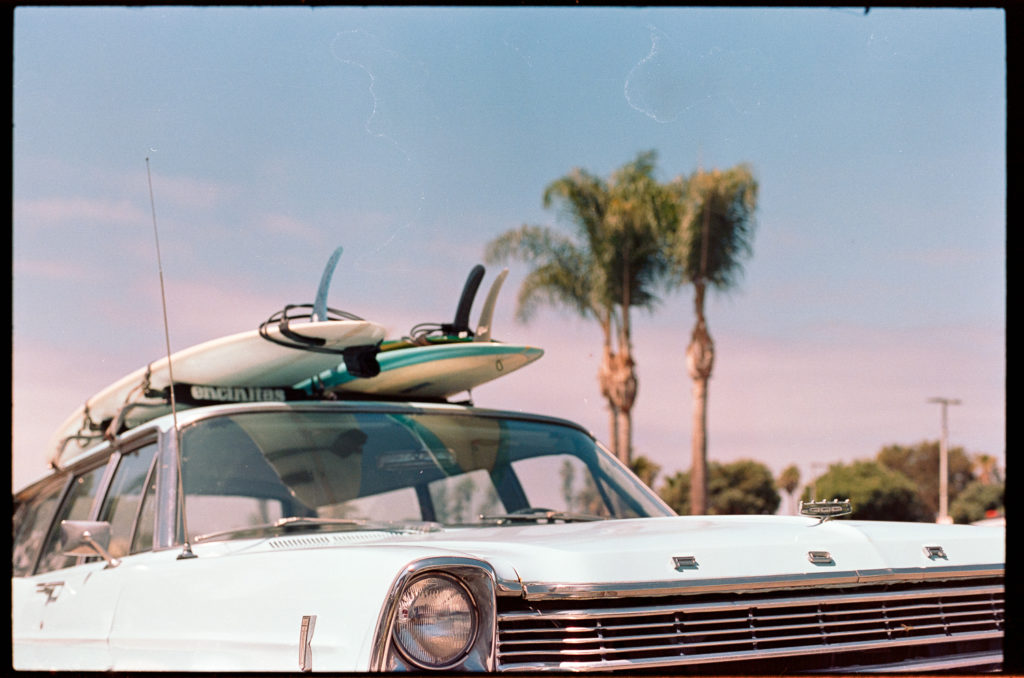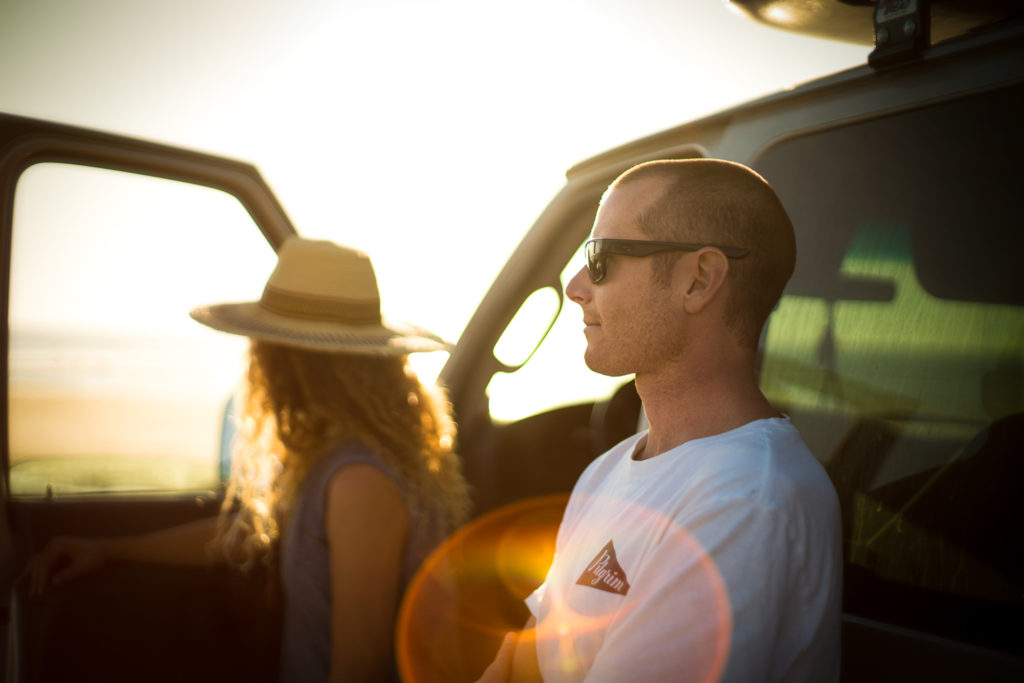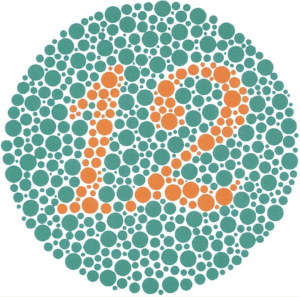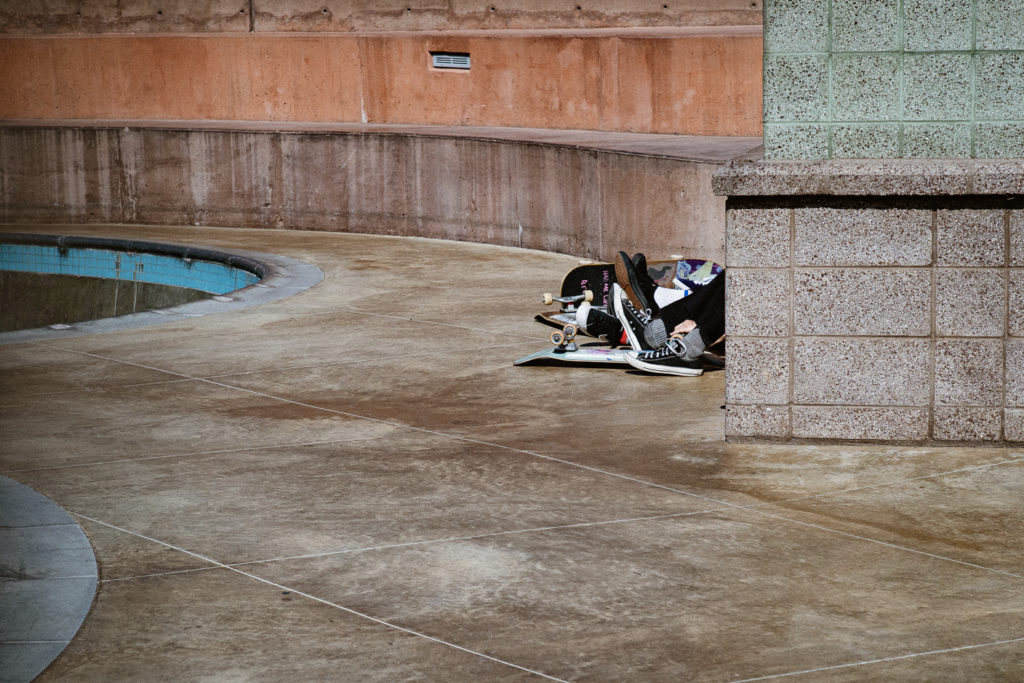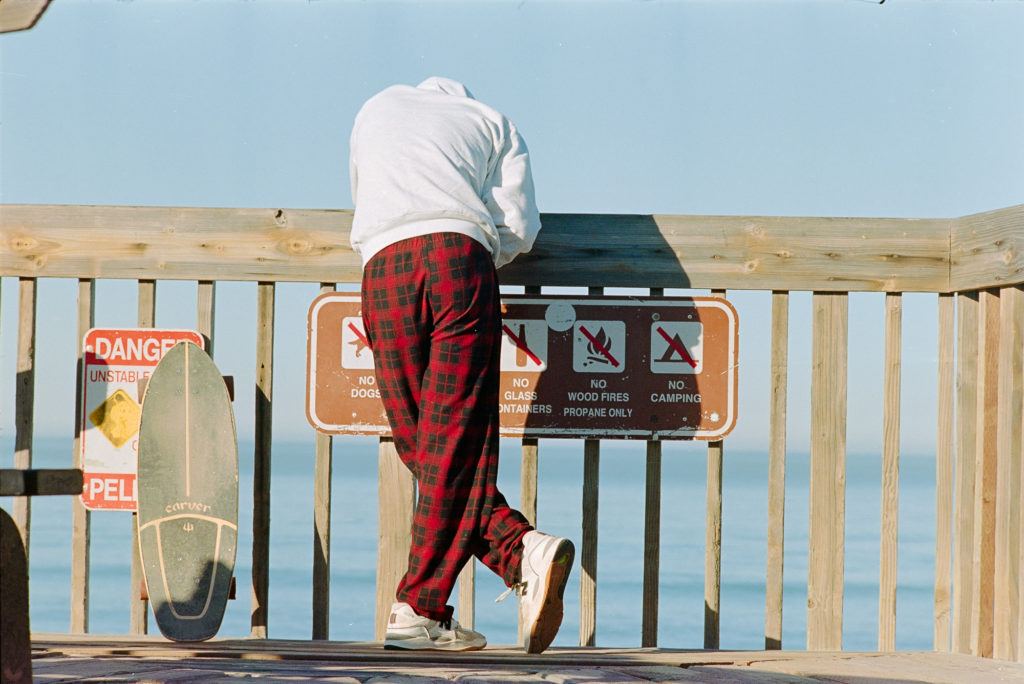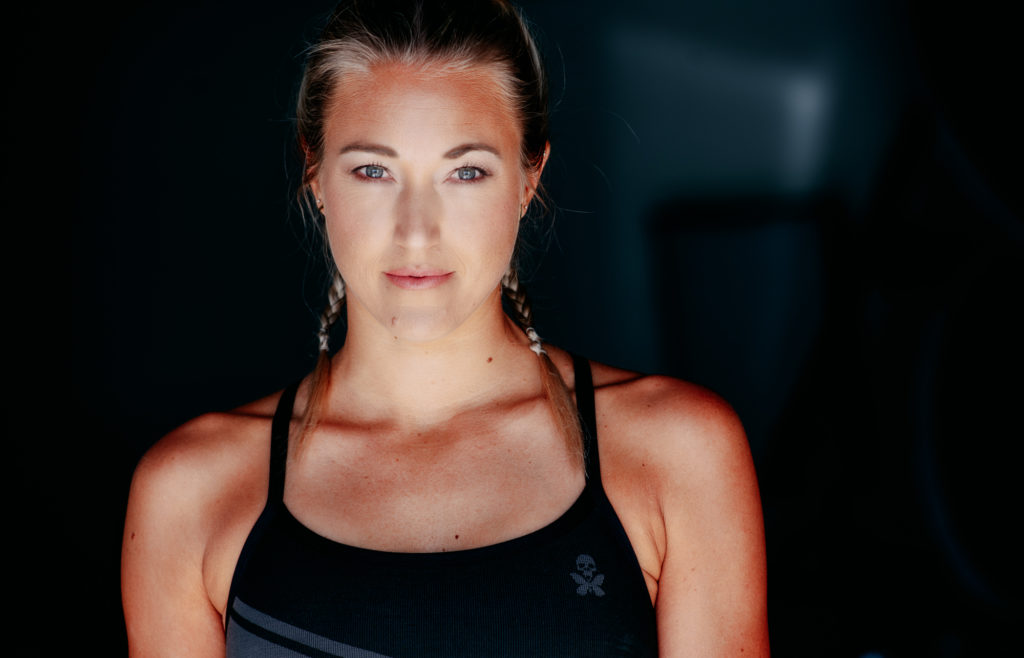One of life’s greatest ironies is that as soon as you are old enough to afford a Leica rangefinder, you are also old enough to start having issues seeing the rangefinder patch.
Vision issues are an unfortunate part of life as we age. This is an acute issue for aging rangefinder photographers who are finding it difficult to focus with a rangefinder patch. This guide is intended to help photographers navigate the hassles of aging and shooting a rangefinder camera.
Part 1: Reasons why it is difficult to find a simple fix for vision issues for rangefinder photographers
If you are a photographer shooting an SLR camera or mirrorless camera with an EVF, in general, there is a simple fix. Get a camera with a high eye-point (see part 2 of this article for a discussion of eye relief/eye point), wear your glasses, get contact lenses, use the diopter adjustment on your camera, or get a screw in diopter if your camera does not have one.
Any and all of these solutions work because the SLR or mirrorless EVF image is a reflected image or mini-TV screen presented at a fixed distance from your eye. Finding a fix for something that you need to focus on at a single distance is straightforward. You might also need reading glasses to see the back of the camera or distance glasses to see the world after you take the camera off of your eye but, in general, the situation isn’t all that complicated because you only need to focus on one point in space while using the camera.
With a rangefinder, the situation is different and more complex. If you have spent any time in the camera forums looking for solutions to vision issues with rangefinders, the complexity become apparent almost immediately when you realize that most all of the conversations devolve into a confusing morass of anecdotal stories with no discernible pattern and ultimately end with “go see your eye doctor.” This is because focusing a rangefinder is more difficult (for your eyes) than focusing on an SLR or mirrorless camera.
The main reason rangefinders pose a problem for people with vision issues
Focusing a rangefinder camera requires you to line up a ghost image that lives in space at a fixed distance and the object you are focusing on which lives at any distance between less than a meter and infinity. If either the ghost image or the real-life image you see in the viewfinder are blurry it is going to be difficult to line them up.
Stated another way, in order to make a rangefinder work you are going to need functional near (back of the camera and LCD screen), intermediate (frame lines, LCD, objects when focusing between 1.5-3 feet), and distance vision while focusing things in the distance and toward infinity. If you don’t have functional near, intermediate, and distance vision it will be different to focus a rangefinder camera. This is a stark contrast to the SLR or mirrorless camera where you really only need to focus at one point in space.
It is important to note that although we talk about near, intermediate, and far/distance vision that is an oversimplification. These are the three general zones we need to worry about but the exact depth of those zones will vary according to how bad our eyes are and which maladies affect our eyes as we age. If you talk with people as they age, they may comment something along the lines of “at some point, my arms weren’t long enough for me to see the menu.” This is because their near vision range was changing over time. This is why you cannot just take the prescription for your eyeglasses and go and get a diopter and be happy. That diopter may only correct for one distance and it might make the vision for another distance worse. In fact, depending on your exact vision issues, it is possible that you may even need three different prescriptions to see over the entire distance that is required to focus a rangefinder. Ultimately, you may learn that a compromise solution or a combination of different solutions is necessary to allow you to keep shooting a rangefinder camera as you age.
In sum, a single fix for near, intermediate, and distance (or any combination of the above) vision issues may not exist for your situation. This is why, depending on your vision problems, finding easy solutions to your questions in the forums don’t come easy and I am sitting here writing a meteoric tome about this subject.
Jargon you need to understand before you lose your mind in the camera forums
In the camera forums, you are bound to encounter armchair ophthalmologists who love to use medical jargon thereby making their responses unintelligible to the normal person. The following is a glossary of terms you will need to know to understand this article and the information the armchair photographers in the forums are offering.
Presbyopia (aka age-related farsightedness): As we age, our eyes lose the ability to focus on close objects because of the hardening and inflexibility of the lens in our eyes. Presbyopia should be considered to be a normal part of aging. The net effect for the purposes of this discussion is the same as hyperopia (see below) but the cause is different. You will need glasses or contact lenses with a positive number (such as +3.0) to correct farsighted vision.
Hyperopia (aka Farsightedness): Hyperopia is usually present at a young age and is caused by an eyeball that is too short such that your eye is focusing behind the retina. The net effect is the same as presbyopia (see above) but the cause is different.
Myopia: (aka nearsightedness): People can see close objects but far objects are blurry. Prescription for glasses or contact lenses to treat myopia will be a negative number
Astigmatism: Astigmatism is an imperfection in the curvature of your eye’s cornea or lens. This causes blurry, fuzzy, or distorted vision at any distance.
 Additional, confounding, variables related to aging.
Additional, confounding, variables related to aging.
In addition to presbyopia, as we age our eyes become less efficient at tear production. After a day on the computer or a day in the field shooting, I find that over the counter eye drops are almost a requirement for me to focus a rangefinder effectively. If you are having issues with dry eyes consult your eye care professional to make sure you don’t have a serious medical issue.
Computer vision syndrome (a.k.a. digital eye strain) is also a fact of life for anyone who works on a computer. At the end of the day of working on devices and computers, our vision suffers. I am finding this is worse for me as I get older. I was unable to identify studies documenting the degree of impact computer vision syndrome has on one’s eyes over the course of the day but, at least for me, my rangefinder focusing ability is decidedly worse after I put in several hours on the computer.
A final confounding variable unrelated to aging
Leica M cameras have a built-in diopter correction of -0.5 or -0.6 depending on the model of the camera. According to Leica,
“The default value of the viewfinder of the Leica M is –0.5 dioptres to guarantee a comfortable view through the viewfinder at medium distances.”
Normal people without any vision issues are able to accommodate for this native diopter correction within the viewfinder and don’t notice that there is any correction at all. People with vision issues, however, cannot accommodate and will have to consider this number when purchasing glasses or a diopter.
If you are nearsighted (e.g. myopic, you have problems focusing on things in the distance), and you use your normal distance/driving glasses, Leica is over correcting your distance vision by -0.5. This might be an issue and you will likely need to account for this when ordering a diopter or glasses for focusing a Leica M rangefinder. It is likely that you would order glasses or a diopter that is -0.5 less than your normal prescription.
This number is also important to consider if you are having age related farsightedness (e.g. presbyopic, you have problems focusing on things very close to you), Leica is making things difficult for you because you might not be able to accommodate for the native -0.5 diopter. Some photographers use a +0.5 diopter to negate the native negative diopter and this is reported to help with age related presbyopia.
Fixing one problem can make a different problem worse
Considering the need to have good near, intermediate, and distance focusing vision and correcting one of the three might make another worse, all of the possible combinations of issues you may have with your vision, the loss of vision many of us experience thought the day, and the native diopter correction of the rangefinder, you can now begin to understand why choosing glasses and/or a diopter with the goal correcting vision issues related to using a rangefinder is more difficult than it would seem on first glance.
This is why so many of the answers to questions in the forums are unsatisfactory and confusing. There are too many variables for non-experts with no real understanding of your eye ailments to account for to offer you help. The smart math says consulting an eye care professional, combined with trial and error, is really the only method fo help identify a satisfactory fix for your rangefinder focusing issues.
The sheer number of variables is also why you might find yourself needing to combine several corrections such as:
- A distance diopter for far focusing and reading glasses to see the back of the camera and frame lines or just deal with blurry frame lines and out of focus LED’s
- A contact lens to fix distance vision and reading glasses to see the back of the camera
- One contact lens to fix distance vision and a different contact lens to see the back of the camera (e.g. monovision)
- An intermediate fix such as glasses or a diopter to fix your far focusing just enough to allow you to focus but doesn’t interfere with your intermediate focusing or near field focusing too much.
- Bifocal or trifocal contacts or glasses
By now you should be getting the idea that hoping to fix your vision issues by just ordering a diopter based on your eyeglasses prescription might not be an effective solution in all cases. If this all sounds labored and confusing, well, good. That is the point. I am trying to get you to go see your eye doctor before you order a diopter online or waste even 5 minutes in the camera forums asking questions.
Part 2: Viewfinder magnification, eye relief, field of view, frame lines, etc.
Rangefinder feature sets vary between different models and different brands. Three features that are often overlooked when purchasing a rangefinder camera are the field of view, viewfinder magnification, and eye relief.
Viewfinder Magnification
The viewfinder of an M mount camera is not just a piece of glass. Rather, the viewfinder has an inherent magnification that will alter how much of the world you can see (e.g. the field of view) when you look through the viewfinder.
There are four main viewfinder magnifications available in Leica M cameras. These are 0.58. 0.72/3, 0.85, and 0.91. Each of these numbers is less than one which indicates that you will see more of the world through the viewfinder than you would see through a piece of glass. In a way, you can think of the viewfinder as a wide-angle lens. You see more of the world with a 24mm lens than an 85mm lens. Similarly, you will see more of the world with a 0.58x magnifier than a 0.91x magnifier.
The viewfinder magnification will also determine which frame lines you have available to you in the viewfinder, how easy it is to see the frame lines if you are wearing glasses, and which lens combinations you can use with the camera without an external framing aid.
A lower magnification viewfinder will offer you a larger field of view when compared to a higher magnification viewdfinder. For example, a 0.58x viewfinder has a wider field of view than a 0.85x viewfinder. A lower magnification viewfinder will, therefore, be easier to use with wide-angle lenses. The trade-off is that you will lose frame lines for longer focal lengths and it will be harder to focus longer focal length lenses because the rangefinder patch occupies a smaller portion of the image.
Conversely, with higher magnification viewfinders, it will be easier to use longer focal length lenses, but you will have a smaller field of view and have fewer frame lines for wider focal lengths.
The following is a guide to which frame lines come with which viewfinder magnifications on most M cameras
- 0.58 magnification: 28/90, 50/75, 35 (there are no 135mm frame lines)
- 0.72/3 magnification: 28/90, 35/135/ 50/75 (you have all of the frame lines for the major focal lengths but it can be difficult to see the 28mm frame lines and difficult to accurately focus a 135mm lens because the frame lines are so small in the frame)
- 0.85 magnification: 35/135, 50/75. 90 (there is no 28mm frame line)
- 0.91 magnification: 50, 90, 135 (you lose 35mm, 75mm, and 28mm frame lines)
Eye point/eye relief
Eyepoint also called eye relief, describes how far away from the viewfinder you can place your eye and still see the entire viewfinder image. This viewfinder specification is less important if you wear contacts or have no vision issues but is important if you wear glasses. Your glasses prevent you from putting your eye directly on the viewfinder. Without sufficient eye relief, you won’t be able to see the entire viewfinder image including peripheral frame lines and/or LED’s.
You might have heard the word eyepoint before. Nikon coined the term eyepoint and used it in the marketing and sales of the F3HP camera. The “HP” in F3HP refers to “high eyepoint.” The Nikon F3HP was a boon for the bespectacled because they can hold their eye farther away from the eyepiece (when compared to other cameras) and still see the entire viewfinder image.
Viewfinder Size
This is the most straightforward of all of the viewfinder metrics. As a general rule, it is easier and more comfortable to see through a larger viewfinder which should come as no surprise because looking through a porthole is easier than looking through a tiny slit. With the exception of the Leica M10, the viewfinder size of the modern Leica bodies is the same. The viewfinder of the Leica M10 is larger than the other cameras. This is generally a feature of the M10 but could be a potential pain point if you shoot multiple Leica bodies and you need a diopter or magnifier that will work across all of the bodies. The screw-in diopter and magnifier for the M10 is not compatible with the legacy camera bodies. Legacy diopters can be used on a Leica M10 with an adapter. Unfortunately, the adapters decrease the field of view which obviates the benefit of the larger field of view of the M10.
The complex relationship between eyepoint, magnification, and field of view
It is reasonable to think that it would be easy to design the “ideal” viewfinder by including a large field of view, large viewfinder size, high eyepoint, and a proper magnification that would allow you to see all of the frame lines. Turns out, it isn’t that easy.
With regard to the viewfinder size, I would be willing to bet that one of the reasons you love your rangefinder is because of the small size. A large and unsightly porthole on the side or top of the camera would give you a bigger field of view but it probably wouldn’t sell well. Leica changed the shape of the M5 and the world freaked out. There is a tradeoff between the field of view, size, and if we are all being honest here, style, when it comes to rangefinder cameras.
There is an inverse relationship between magnification and eyepoint. Lower magnification viewfinders allow you to see the entire scene with your eye farther from the eyepiece. Conversely, it is going to be hard to have a high eyepoint finder with a high magnification viewfinder because you will likely only be able to see the central area of the scene.
These tradeoffs with viewfinder design suggest that there is no ideal viewfinder for every camera or photographer. You are going to have to decide on your ideal camera and viewfinder combination based on the size of the camera, eyepoint, and magnification that works for your particular glasses, vision issues, shooting style, camera lens selection, and even your head shape (my big honking nose gets in the way with glasses while small nose people may fare better). You should, however, understand that these are important topics when deciding on a rangefinder and even if shooting a rangefinder will be a viable option for you.
It may be of interest to note that Leica mentions all of these issues in their marketing materials for the M10 which, unsurprisingly, is generally accepted as one of the most accommodating Leica rangefinders for people who wear glasses:
From the very beginning, the ‘Messsucher’ (combined rangefinder/viewfinder) of the Leica M played an essential role. So essential that it gave the system its name; the ‘M‘ stands for ‘Messsucher’. For the Leica M10, several important aspects of this legendary combined viewfinder and rangefinder system have now been further improved. To improve the view of the subject, the field of view has been enlarged by 30% and the magnification factor has been increased to 0.73. In addition to this, the eye-relief distance has also been significantly increased. Thanks to a 50% increase in this distance, the viewfinder is much more convenient to use, particularly for photographers who wear glasses.
If your glass is half empty, you wouldn’t be criticized for reading this bit of marketing copy and thinking, “Great so are the other Leica rangefinders just not designed to work well with glasses?” Unfortunately, that glass-half-empty conclusion, as I am finding, has some validity.
To summarize this section:
- A finder with higher magnification, such as 0.85x, will better allow you to focus normal and longer focal length lenses. This is an option if you do not intend to shoot wide-angle lenses. This is also a good option if using an external, hot shoe located, viewfinder for wide-angle lenses is an acceptable trade-off. With an external finder, you would need to focus the image and frame the image using two different finders. Fortunately, with a wide-angle lens focusing becomes less critical especially at higher f/stops. It might also be important to remember that you will not be able to use a hot shoe based light meter with an external viewfinder.
- A lower magnification, 0.58x, finder will better allow you to shoot wide-angle lenses with glasses because the 28mm frame lines are easier to see. If you do not intend to shoot longer focal lengths, this is a good option. It may be of interest to note that even under the best conditions, it can be difficult to shoot longer focal lengths reliably, at open apertures, with a rangefinder, and can be especially problematic if you are having vision issues. Even when I had perfect vision I could not reliably focus a 90mm lens at f/2.8, at close focusing distances, using a 0.72x rangefinder. Maybe a rangefinder isn’t the best tool for longer focal length lenses?
- A 0.72x finder is a good compromise for people without vision issues but glasses wearers should not expect to see the 28mm frame lines while wearing glasses. Your glasses will elevate your eye from the viewfinder enough such that the frame lines will be impossible to see without scratching and bending your glasses. If you already own a 0.72x rangefinder, consider an external wide-angle finder if you must wear glasses.
Part 3: Viewfinder magnifiers
The field of view of a rangefinder’s viewfinder is fixed depending on the magnification of the viewfinder. This isn’t an issue when focusing wide-angle lenses. With longer focal lengths (in my experience greater than 50mm) it becomes progressively more and more difficult to obtain critical focus because the frame lines become smaller and smaller and the rangefinder patch takes up proportionately more of the image area. This is a particular issue because the depth of field of longer focal lengths also requires more critical focusing.
One way to help obtain critical focusing is with a focus magnifier. These magnifiers screw into the viewfinder. Leica makes these accessories in 1.25x and 1.4x magnification. Third parties seem to have made similar accessories in the past but at the time of writing, I was unable to locate third-party accessories that are currently in production.
The 1.25x magnifier is intended to be used on 0.72/3x viewfinders with lenses 50mm and above. The 1.4x magnifier is intended to be used on 0.72/3 viewfinders with lenses 75mm and above. The reason for these recommendations is that the magnifier allows for visualization of the central area of your viewfinder but you will lose the periphery. Stated another way, you will lose some of the frame lines. For example, with the 1.25x viewfinder, the 50mm frame lines will occupy the majority of the field of view. You will lose the ability to see the 28 and 35mm frame lines.
Losing the ability to see the wider angle frameless is, however, the point. The goal of the magnifier is to magnify the central area of the frame and it does that very well. Almost universally there is an acceptance that these magnifiers help achieve critical focusing using longer focal length lenses.
The focus magnifiers, however, are not intended to help fix vision issues. If the focusing patch is blurry and you can’t focus without a magnifier adding a magnifier will just enlarge the blurry focusing patch. A bigger and blurry focusing patch doesn’t do anyone much good.
The focus magnifiers have threads so you can use a diopter and a focus magnifier. There are, however, a number of reports online where diopter users have issues combining diopters with the focus magnifier. It is not clear if this is because the focus magnifier increases distance to the viewfinder causing issues or if the focus magnifier has additional magnification or demagnification that changes the required diopter. Given the potential for incompatibility between a diopter and a focus magnifier, it would be worthwhile to either obtain a focus magnifier first and then work with your eye care specialist to select a diopter or go to a Leica store and test out different combinations.
These focus magnifiers are intended to be taken on and off the camera should you want to use wider focal lengths and come with a little chain to attach to your camera strap so you don’t accidentally lose it.
As stated previously, the intended goal of the focusing magnifiers is not to correct focusing issues related to vision problems. Rather they are intended to correct the inherent difficulty of focusing longer focal length lenses with a rangefinder. Nonetheless, they have been used by aging photographers to help achieve critical focus because a bigger rangefinder patch can be easier to focus on than a small one. If you have your glasses, contacts, and/or diopters dialed in so you can use the rangefinder patch, a focusing magnifier may be valuable to you if you intend to shoot longer focal length lenses.
The main downside of these focusing magnifiers is the cost. Currently, they sell for $450.00.
Part 4: Contrast and colored lenses
Vision issues are an unfortunate part of life as we age. This is an acute issue for aging rangefinder photographers who are finding it difficult to focus with a rangefinder patch. This is the first installment of a multi-part series considering essentially all of the options available to rangefinder photographers with vision issues hoping to prolong their relationship with a rangefinder patch.
Most of us equate “vision” and the ability to focus using a rangefinder patch with visual acuity or spatial resolution. Spatial resolution is the type of vision that allows you to see high contrast things like black letters on a white background and is what is measured with the eye chart hanging in your doctor’s office and the wall of the department of motor vehicles when you do an eye test to get your driver’s license. This is also the type of vision that is corrected with traditional glasses and diopters.
Another type of vision we are all familiar with is color sensitivity vision. Color blindness is a lack of color sensitivity vision and it is tested with Ishihara Vision Testing Charts such as seen below. People who are color blind cannot see the number 12 in the following image.
Color vision isn’t necessarily critical for rangefinder focusing but a third type of vision, contrast sensitivity vision, is important but not generally considered by photographers as a cause for difficulty focusing a rangefinder camera. Contrast sensitivity vision and can be independent of visual acuity. In fact, some people can have 20:20 vision or wear glasses to correct to 20:20 vision but still have difficulty distinguishing objects (1) in low contrast situations. To give you an idea of what we are talking about with contrast sensitivity vision, the following is a Vistech vision contrast test system used to evaluate contrast sensitivity. People with poor contrast sensitivity vision have difficulty distinguishing the black and white lines in the following image.
Contrast sensitivity vision is particularly important in low light and low contrast situations which are the situations where even people with good vision often stumble while focusing with a rangefinder camera.
Unfortunately, contrast sensitivity vision declines as we age (2,3), and it can be difficult to detect unless you are testing for it. I was unable to find a good online test of contrast vision but as a correlate to demonstrate that your senses might be declining without you realizing the decline, our hearing is also declining as we age yet most of us have no idea we have hearing loss unless we test for it. This is an example of a high-frequency hearing test that you are almost guaranteed to fail if you are old enough to read about vision issues focusing on a rangefinder patch.
Assuming that contrast sensitivity is important to focusing a rangefinder camera I am not sure it is established how much contrast sensitivity contributes to difficulty focusing a rangefinder as we age and/or if there is anything we can do about it. Colored lenses are one attempt at improving contrast sensitivity and, hopefully, rangefinder focusing performance.
Anecdotal and scientific evidence for colored lenses
There is ample anecdotal evidence to suggest that contrast sensitivity can be improved by using colored lenses. Any skier who skis on cloudy, dark, low contrast days knows that wearing yellow goggles seems to improve vision when compared to wearing clear goggles. Yellow lenses are also employed by hunters, cyclists, and other sports enthusiasts on low contrast days to improve vision and depth perception. I have used rose-colored glasses while cycling for years and swear by them. Any number of companies are willing to sell us “anti-fog,” “night vision,” or “safety” yellow-tinted glasses to help driving at night or in foggy conditions. I even found a report of one pilot who recommends against pilots wearing yellow glasses because he feels they are too good at improving vision in low contrast situations, so much so that pilots are accepting too much risk of getting into a dangerous situation because they are so good (8).
There is a long history in photography of using colored gels and tinted lenses to improve focusing with rangefinders. Most of us are familiar with the blue gel trick to squeak performance out of an old and degrading rangefinder. Petri cameras came standard with their “green-o-magic” tinted rangefinder to increase contrast. Leitz even made OKARO colored filters for Barnack rangefinders.
The theoretical basis for improving contrast sensitivity suggests that we can improve contrast sensitivity by blocking specific wavelengths of light (7). Studies suggest that this is a real (rather than placebo or perceived) benefit (4), but there are also inconclusive studies (5,6). Notably, most of these studies aim to improve contrast detection in people with normal vision or with specific ocular disorders. I could not find any research on the effects of tinted glasses/filters for rangefinder fans who are having difficulty focusing using a rangefinder patch as they age. It is unknown if any of the research applies to focusing a rangefinder camera.
Colored lenses to improve contrast vision and rangefinder focusing
My initial proof of concept was to use my Leica M10 with my Oakley Prizm rose-colored cycling glasses. The experience of using glasses with a rangefinder was generally unsatisfactory (more on that in future segments discussing viewfinders and eye relief), but there seemed to be some improvement in my focusing ability in some situations. In particular, I found the glasses helpful in very low light and low contrast situations. I saw minimal improvement in bright and/or high contrast situations. I am unsure if my focusing ability actually improved or if it just seemed easier and I enjoyed the experience more. Either way, I am not sure it matters. Anything that improves the rangefinder experience is a win given that I use my rangefinders for personal (rather than commercial) applications.
Walter Leica sells colored lenses with the stated goal of improving the focusing experience of a rangefinder. The Walter contrast lenses are sold in three flavors. Yellow, blue, and coral. There isn’t much information regarding which lens to choose on the Walter Leica website, but in email communication with Walter, he commented:
“The Golden Contrast lens works the same as snow glasses/driving glasses ….they all cut the UV at the end of the light spectrum which results in more contrast and clear image for easier focussing. This topic has a lot of different views , but the main issue is it does work. I started with the Golden Contrast lens (which is still the most requested) and then got requests from the old die hard Leica users who wanted an orange / coral lens they used on the screw thread mount Leica’s in the 1950s…. this resulted in the Coral Contrast lens.
The Blue Contrast lens has exactly the same effect, but it is more subdued…I guess it all comes down to personal choice…remember, each eye is unique in its way. I recommend the Golden Contrast as this could be considered an all rounder in many lighting situations.”
As much as I would like to try one, I didn’t purchase a Walter Leica Golden Contrast Lense. Not yet at least. In my situation, my vision is worsening at a steady clip. I am hoping that it will stabilize. Once it does, and assuming that I don’t give up completely on a rangefinder, I will be testing the Walter Leica Contrast Lense. Because my vision seems to be getting progressively worse and I expect I will need stronger and stronger diopters, contacts, glasses, magnifiers, or some combination of the above I wanted to keep my finder threads free of accessories and open for changing diopters and magnifiers if needed.
In conclusion, there is a theoretical basis for why a colored viewfinder lens is sound. If your eye care professional rules out pathologic causes for a loss in contrast vision (such as a cataract) and if you are at all worried that contrast vision may be an issue you are having focusing a rangefinder a contrast lens is worth a try. Walter Leica also makes corrective lenses for photographers with astigmatism and diopters combined with a colored lens.
REFERENCES
- https://www.semanticscholar.org/paper/CONTRAST-SENSITIVITY%2C-DRIVERS%27-VISIBILITY%2C-AND-Ginsburg/53f16629349386603b46945c003f764bfee2fb6e
- Age variations in normal human contrast sensitivity
- Effect of age on contrast sensitivity function: uniocular and binocular findings
- Improvement of contrast sensitivity with yellow filter glasses
- Effect of yellow-tinted lenses on contrast sensitivity
- The effect of a yellow filter on contrast sensitivity
- Contrast is enhanced by yellow lenses because of selective reduction of short-wavelength light)
- Do All Pilots Need Sunglasses? : Yes, Find Out Why! – Pilot Teacher
Part 5: Reverse Zone Focusing
Zone focusing is part and parcel of rangefinder culture. If you are reading this, we can assume that you know what zone focusing is and how it works. If not, I refer you to this post.
I always assumed that if zone focusing works the reverse must also be true. There must be some degree of latitude with how exact one needs to be when lining up the focusing patch and ghost image while focusing a rangefinder. My vision issues forced me to test this theory and the results allow me to be less stressed about my vision and helped me focus faster with the rangefinder. I call this reverse zone focusing.
What I learned is that I didn’t really understand how much latitude there was focusing a rangefinder. If I am being honest, I was always piddling, fiddling, and going back and forth with the focus tab trying to perfectly align the rangefinder patch and the ghost image. Spoiler alert: in most cases, it is not necessary to perfectly align the rangefinder patch and ghost image.
During my tests, I wanted to know is how much I could be off while focusing the rangefinder image and still have a sharp image. In other words, I wanted to reverse engineer what we all know about zone focusing to what I see in the viewfinder so I did some tests. You can read about the process and see all of the results at this link
Here is an example to prove that you don’t have to perfectly line up the rangefinder patch to get a sharp image. On the left is an obviously misaligned focusing patch. On the right is a perfectly sharp image.

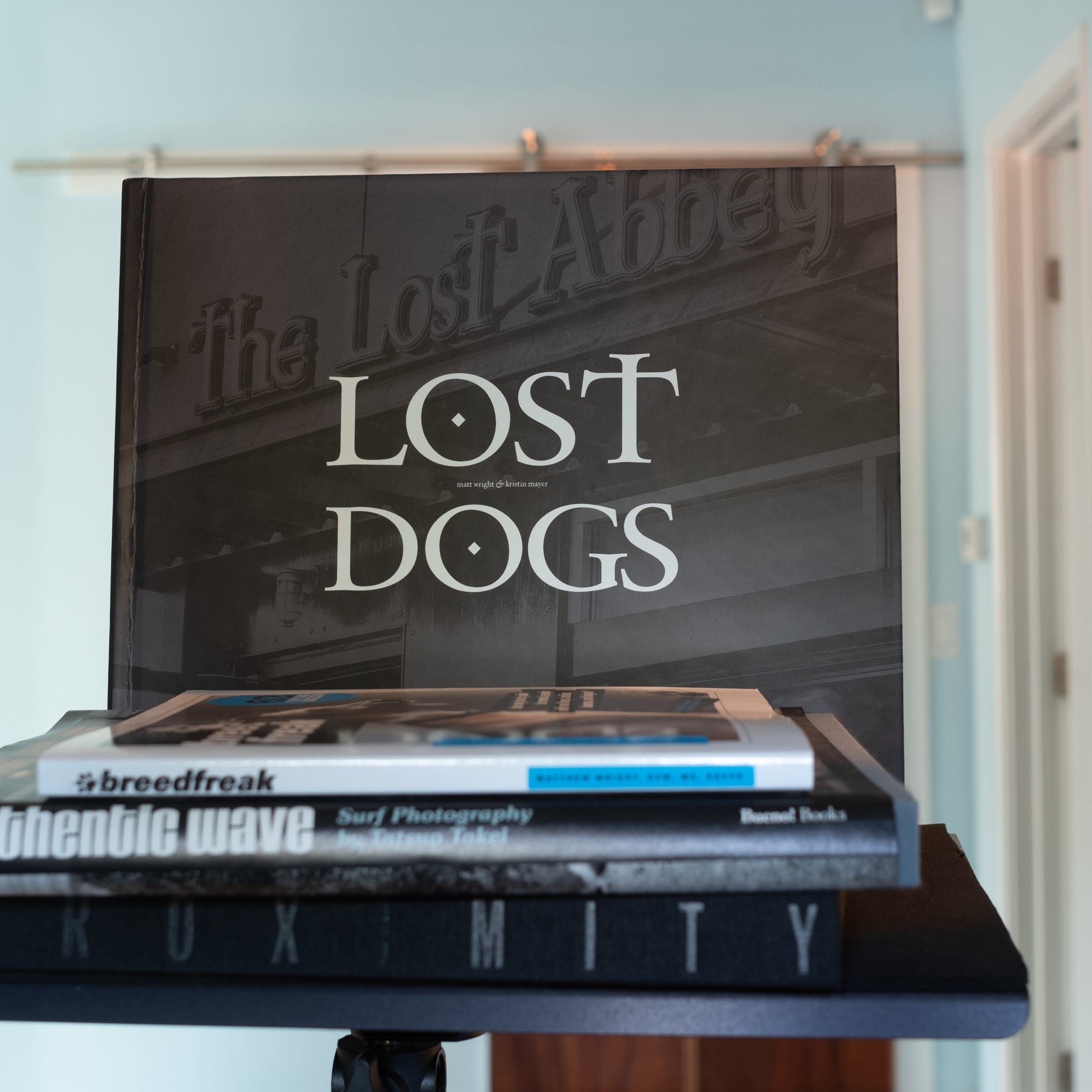
This test proved my theory that because zone focusing works there has to be some latitude in how close we need to align the rangefinder patch and still get a sharp image. This test showed me that I was too worried about obtaining critical focus in many situations. Of course, this doesn’t work at all focal lengths, distances, and apertures. I encourage you to see the results of my tests for more specifics and test images.
After doing this test, I did a few additional tests and learned that if I wasn’t shooting wide open or at near focusing distance, I could pretty much take a first swipe of the focusing tab…get things mostly lined up…and get a sharp image. Unless I am shooting wide open and close focusing distances I no longer go back and forth with the focusing patch. I found that if I was stopped down just a little, I could skip all of the back and forth getting the focusing patch perfectly lined up. In a day I spent practicing, I was fast and had a very high percentage of sharp images (4).
With regard to vision issues, what this all means is that even if you cant perfectly see the rangefinder patch there is still hope. Maybe you don’t need perfect vision if you are not shooting at f/2 and 1meter?
Part 6: When all else fails and using a rangefinder is just too cumbersome for your aging eyes
I came to rangefinder cameras in 2015 because I was drawn to vintage and manual focus lenses. I also wanted a camera that was smaller than the DSLR’s that were being sold at that time. Back then, in my opinion, a rangefinder was the absolute best option for using manual focus lenses on a digital camera. Using adapted lenses on a 2015 era DSLR live view was slow and the electronic viewfinder (EVF) of the early mirrorless cameras was too small and painful to allow for efficient use of manual focus lenses. When I started down this manual focus lens path there really was no good option other than a rangefinder.
By 2021, the DLSR was effectively declared dead and the modern EVF’s on mirrorless cameras are now so good that many (including myself) have said that a rangefinder is a great but unnecessary option for using manual focus lenses on a digital camera. I am faster with a rangefinder but more accurate with an EVF.
Unfortunately, there are too many photographers who were scarred by their experience with early EVF-based cameras and have not given modern EVF cameras a chance. If you are still on the fence about using an EVF it is time to revisit the subject. The current batch of EVF’s are huge, high resolution, bright, have a fast refresh rate, and focus peaking is better than it was in 2016.
Even Leica is pushing us there with their recent campaign encouraging photographers to use M lenses on their SL line of mirrorless cameras. This is one video from that campaign. Leica was also giving away M-L mount lens adapters with the purchase of a new SL camera.
EVF based options to keep your rangefinder lenses in play
Mirrorless cameras with a modern EVF are the logical next step if you are too frustrated with trying to focus a rangefinder with your aging eyes, don’t want to deal with screw-in diopters, you reject the idea of wearing glasses with a rangefinder, and/or contact lenses are not an option.
As stated previously in this series, focusing on an SLR or EVF is a much simpler task for your eye than trying to focus a rangefinder because you are only focusing at one distance. Many SLR cameras and, at least to my knowledge, all EVF mirrorless cameras have built-in diopters that should be able to get photographers without astigmatism, and without terrible vision, in the range of functionality without glasses. If you have astigmatism and/or want to wear glasses for any reason, the huge field of view, good eye relief compared to many rangefinders, an EVF may allow bespeckled photographers a better experience than a rangefinder.
Mirrorless cameras are not created equal. If you intend to use rangefinder lenses adapted to a mirrorless camera, you should be aware that some mirrorless cameras are not entirely compatible with rangefinder lenses.
As a general rule, wider angle rangefinder lenses (<35mm focal length) will have smearing in the periphery of the image when focused toward infinity (NOTE: this is not an issue with longer focal length lenses and/or wider focal length lenses shot at close focusing distance) The reason for this is that the thickness of the imaging sensor + protective glass and other layers (aka sensor stack thickness) is thicker than rangefinder lenses were designed to use. I have a full discussion of this topic at this link.
In the following example, the two images were shot with the same lens. The image on the left is adapted to a Panasonic S1 and the image on the right is shot on a Leica M10. Note the smudging of the rocks on either the right and left side of the bicycle.
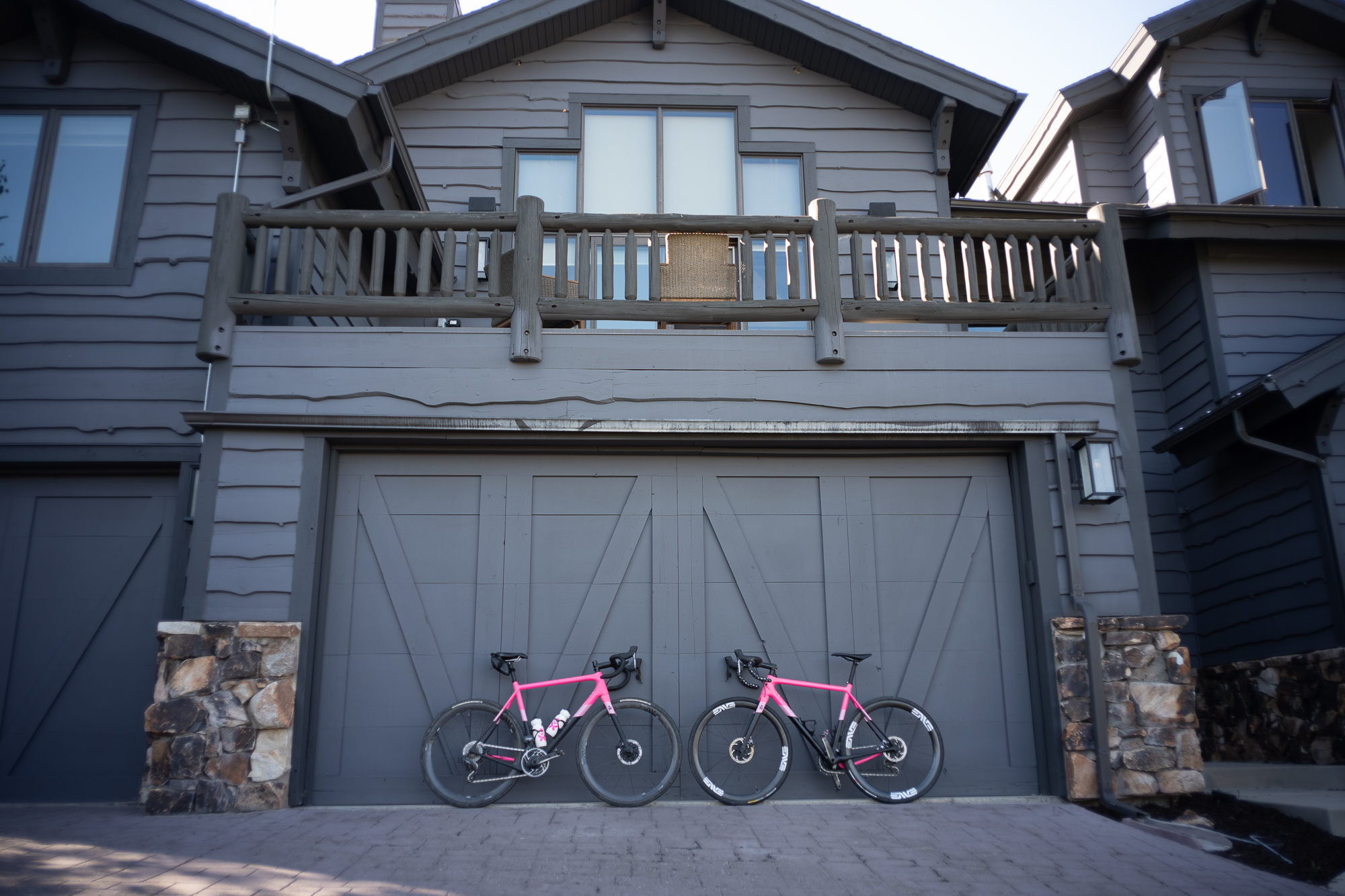
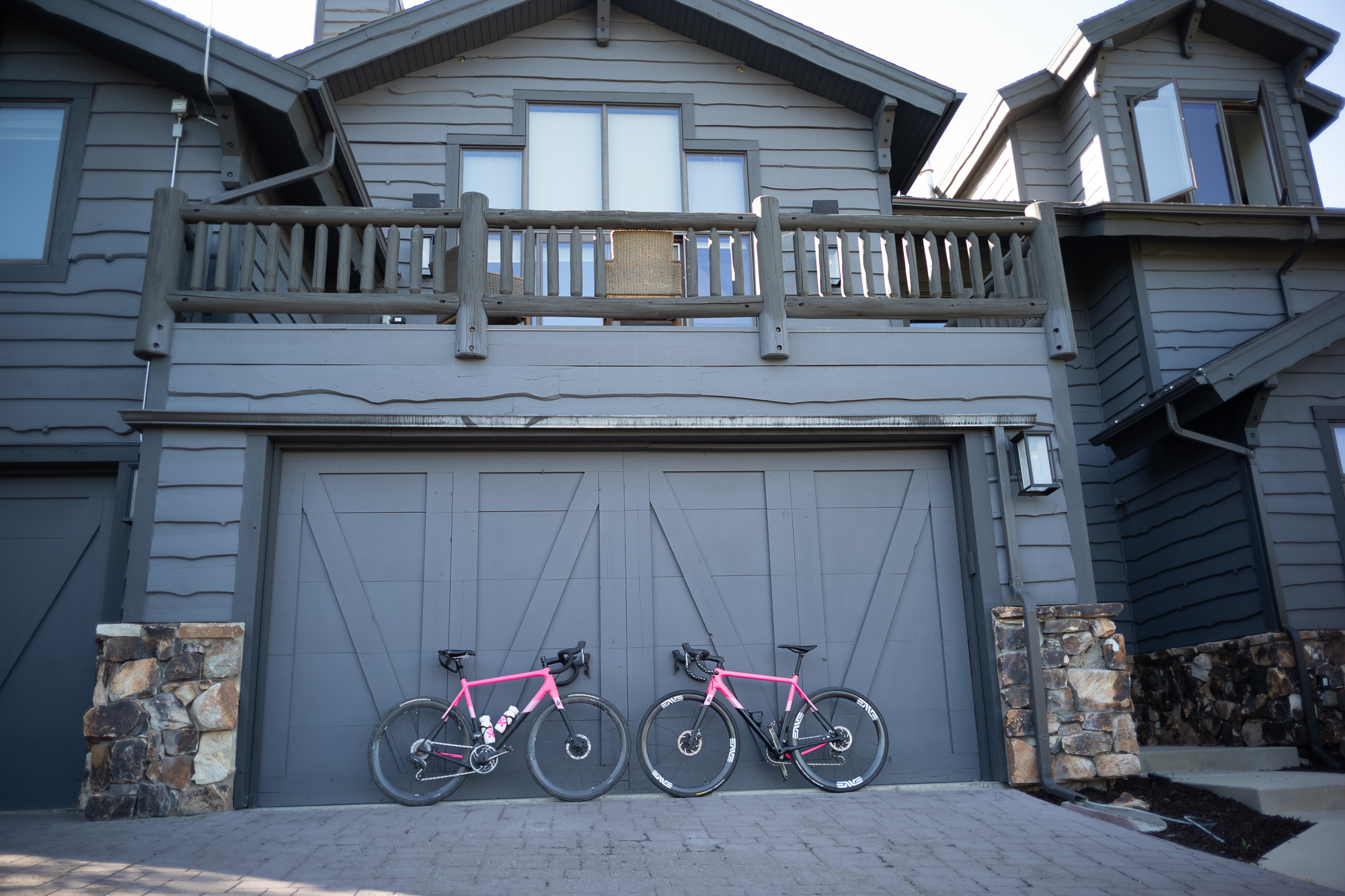
At the time of writing, the only mirrorless cameras I am aware of that will work with rangefinder lenses of all focal lengths are the Leica SL, SL2, and SL2-s cameras. Leica designed the sensor to work with legacy rangefinder lenses. The only option I can recommend without reservation to be used with adapted rangefinder lenses, at the time of writing, is a Leica SL system camera.
Another option is an aftermarket modification of the camera sensor to reduce sensor stack thickness. Companies such as Kolari Vision, perform surgery on mirrorless cameras, including Sony, Canon, and Panasonic cameras, to modify the sensor stack to better accept rangefinder lenses.
I have used a Kolari modified Panasonic S1 camera for commercial work extensively in the last year but there is one major caveat. After sensor modification, you will no longer be able to use the auto-white balance. The thin sensor conversion impairs the auto-white balance functionality of the camera and all images have a color shift. This color shift is generally easy to remove in post-processing but there are some images where removing the color shift can be problematic. It is also easy to set a custom white balance using a grey card but that is an extra step that can be very annoying in changing light conditions. If you are going to consider a thin sensor conversion I encourage you to seriously consider the extra step of dealing with the color cast on your images and if that is something you want to worry about.
This image was taken on a Panasonic S1 with a Kolari thin sensor conversion.
Another possible, albeit suboptimal, EVF-based option is a Leica Visoflex Typ 020
The Leica Visoflex (Typ 020) is an electronic viewfinder compatible with the Leica M9 and M10 cameras.
The Visoflex Typ 020 is a perfect tool for framing images if you are using lenses wider than 28mm. Unfortunately, I have not had great luck with the Visoflex Typ 020 as a focusing aid. With a slow refresh rate, small 2.4mp resolution, and poor focus peaking (when compared to more current EVF options) the Visoflex Typ 020 should not be considered to be a viable alternative to focusing with a rangefinder patch on a digital Leica M. It also, obviously, won’t work on a film camera.
The Visoflex Typ 020 was released in 2014. Therefore, comparing it to a 2021 model EVF probably isn’t even a fair comparison. There is a rumor that Leica will be releasing an updated Visoflex sometime in 2021. Hopefully, post-pandemic supply chain issues won’t delay the Visoflex update.
The nagging problem of style and size with mirrorless cameras and rangefinder lenses in 2021
As a rangefinder shooter, it is possible that you are drawn to the rangefinder camera for the size. I was. Trading your rangefinder for a mirrorless camera, unfortunately, means that you need to take a step up in size and, I would contend, style. The current batch of rangefinder lens compatible mirrorless cameras are big, bulky, and lack the style of a Leica M or other rangefinder camera.
One would hope that this would change and some company would release a full-frame, rangefinder compatible (e.g. thin sensor), stylish, small/rangefinder size mirrorless camera, with a high-resolution EVF. To date, nobody has.
Fuji and Nikon recently-released cameras that fit the style bill with the Nikon Zfc and the Fujifilm XE4. Unfortunately, both are crop sensor cameras, have a sensor stack that may be incompatible with some rangefinder lenses, and the EVF is, in my opinion, insufficient if your primary goal is to use manual focus lenses.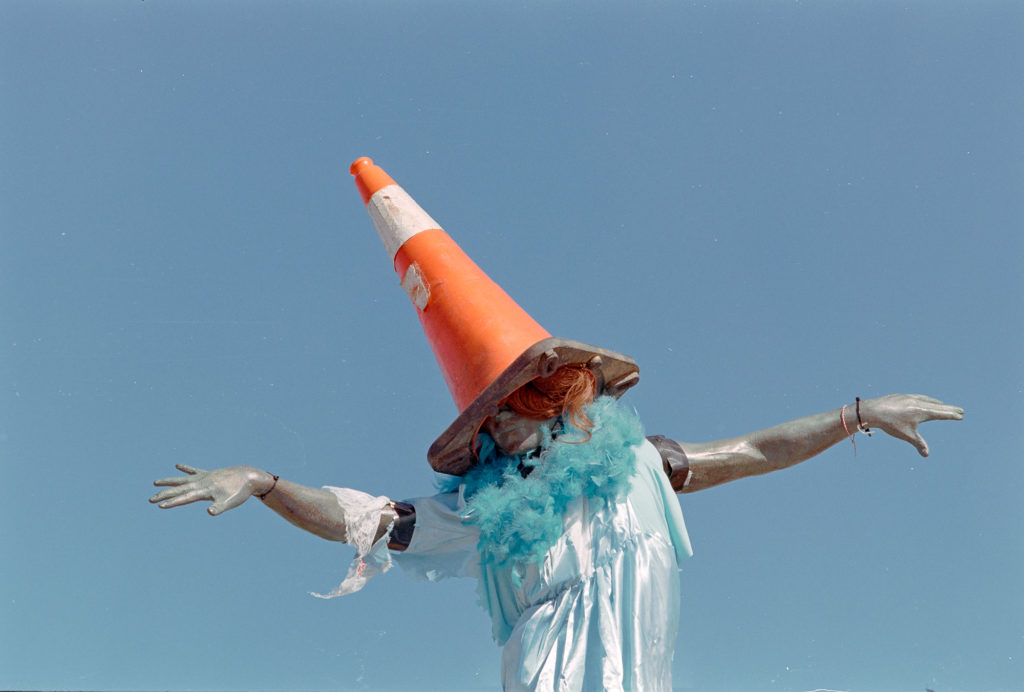
Epilogue: I am keeping the Leica M10 and M7
TL;DR; I am keeping the rangefinder. I wasted too much of my life in camera forums researching this nonsense only to get things sorted out at my ophthalmologist’s office in 15 minutes. Monovision contact lenses were my solution. Please go see your eye doctor and bring your camera.
Before we get to my situation, it bears repeating that your situation is almost guaranteed to be different than mine. I only mention what I decided to do to bring closure to this series and demonstrate how stupidly complicated things can be and how many options you have. It also bears repeating that my vision isn’t all that bad…yet.
- Fail #1: Glasses. I tried glasses but hated looking through the viewfinder with glasses. I feel for photographers whose only option is glasses. I could maybe get used to it if I had a Nikon F3HP or something with an extremely high eye-point viewfinder. I could even get used to it if I had the funds to swap out both of my Leica cameras for a 0.83x viewfinder and a 28mm external finder but that is not in my budget. Not for me at least. What I really hated about the glasses actually had nothing to do with the viewfinder. The problem was that I needed to use two pairs of glasses to take photographs. One set of glasses to see the rangefinder viewfinder, and one set of glasses to see the back of the camera. Switching between the different sets of glasses was too much for me to handle and I had a minor meltdown when I tried it.
- Fail #2: Diopters. I ultimately didn’t go with a diopter but I could have. In my situation, I have two Leica bodies that I shoot side by side – an M10 and an M7. I brought the M10 to the optometrist’s office and he has a little slide-in adjustments and we determined that with a distance correction I would have full use of the rangefinder. The issue for me is that Leica diopters are expensive at around $450.00 each. I would need two. I also have a Hasselblad and a Nikon Fm3A so I would need two more. Moreover, if I got a diopter for all four cameras I would still need two sets of glasses to take photographs given that I would need to wear one set of glasses to see the world, take off those glasses to use the rangefinder with a diopter than put on another to see the back of the camera which would result in me having a another meltdown.
- Fail #3: traditional contact lenses. Before I got Lasik I wore contact lenses. Because I have issues with near and far vision, however, if I fully correct my distance vision, the back of the camera is a complete blur. This would require me to always have a set of reader glasses with me. To complicate matters I would also need a different set of readers to read at night if I wasn’t wearing contact lenses. I tried this solution but it was unsatisfactory and drove me a little nuts because my near vision was so bad with the distance correction contact lenses. #minormeltdown.
Monovision
The final solution was the best solution for me. Monovision.
Monovision refers to any technique (surgery or contact lenses) where one eye is corrected for distance vision and the other eye is corrected or for close vision. I had read about this once (and only once) in a forum thread with Jonathan Slack and summarily ignored it because it seemed insane and nobody else talked about it. I thought “How could anyone tolerate having one eye corrected differently than the other? What do you do run around and close one eye all the time and switch depending on what you are looking at?” Like many things in life, I was wrong. It is magnificent.
With monovision, you don’t actually use one eye to see distance and the other to see close. Rather, your brain plays some brain game and you just see clear all the time. It seems like magic and there is no possible way it can work but somehow it does. I am not sure anyone exactly understands why it works but your brain just ignores the blurry image and everything is clear..most of the time. With computer work at an intermediate distance, I prefer my glasses rather than monovision. I wear my single contact lens when I am doing sports and making photos. In other situations like computer work, just being around the house, etc. I prefer my glasses.
Monovision only works for about 50-60% of the population so it isn’t for everyone. I was told that because my vision in one eye is very close to the other one, that is a predictor of success.
If this epilogue caused you to have your own meltdown and think to yourself, “OMG this guy is a pedantic pain the ass who talked and talked only to say he got monovision????” and this upsets you, good. That was the point.
The point of all of this is to show you how many options you have and that your situation will be different than everyone else. Given that, there is no reason to ask questions in forums. Please stop reading about what I did, and go make a reservation with your eye care professional. Bring your camera when you go and get on with your life. You might need diopters. You might need glasses. You might need a new camera. I have no idea what you need but I do know that you probably won’t find the best answer in a camera forum.
The end.


